 EN
EN
 PT
PT

Quick Guide for Teachers – Lower Secondary School
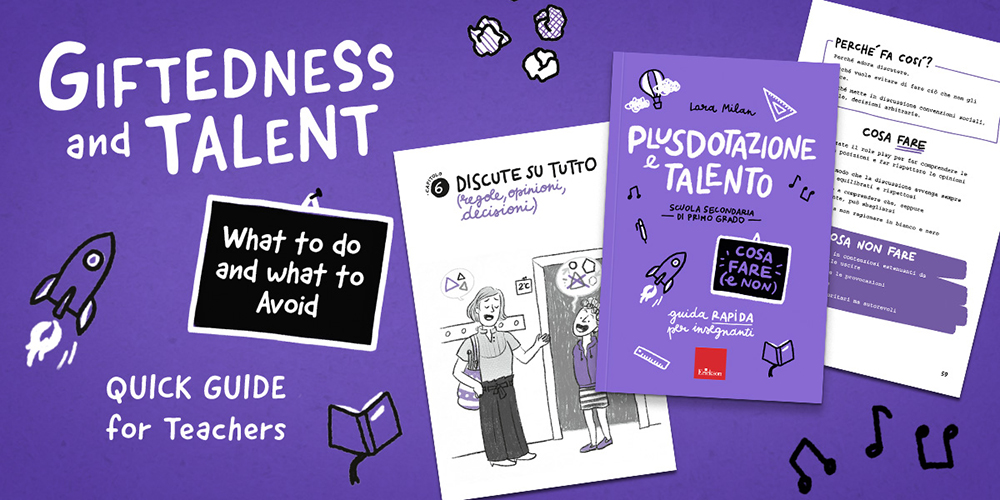
The term giftedness is used to describe a set of genetic, psychological and behavioral characteristics that characterize gifted children and young people, who make up about 2% of the school population. The gifted child has a different intelligence, not only quantitatively but also qualitatively: a different functioning mode, which is characterized by the ability to think in a divergent and creative way, solve complex problems, think abstractly, learn quickly by processing a large amount of data faster than the others.
The volume Giftedness and talent – What to do and what to avoid presents useful suggestions and indications for lower secondary school teachers to involve and enhance gifted pupils at school and respond to their cognitive and socio-emotional needs by proposing concrete indications on what to do and what to avoid in class.
BOOK STRUCTURE AND CONTENTS
The book is divided into 15 chapters grouped into two macro-areas: cognitive needs and socio-emotional needs, and analyzes the needs found in gifted children in the lower secondary school age group, but which can also be observed in primary school students and in secondary school students (and beyond).
What to do and what to AVOID
The reason for the behavior is explained at the beginning of the chapter in a few concise sentences (Why does he/she do this?), followed by simple and clear indications for the teacher on the attitudes and strategies to follow and to avoid (What to do, What to AVOID). Finally, tools and strategies are provided on How to intervene regarding some crucial aspects. At the end of each chapter there is Expert advice, with practical suggestions to be implemented immediately.
Each chapter:
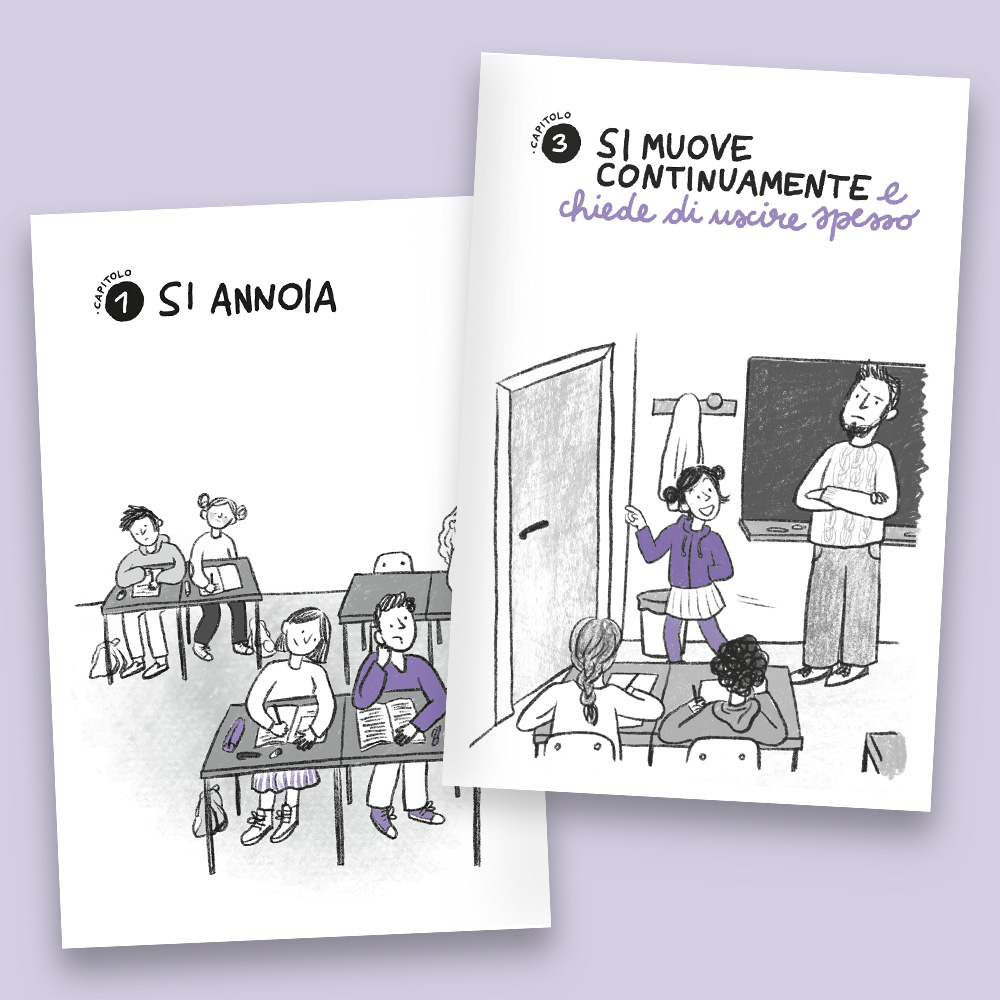
At the beginning of each chapter, a drawing introduces the analysed behaviour.
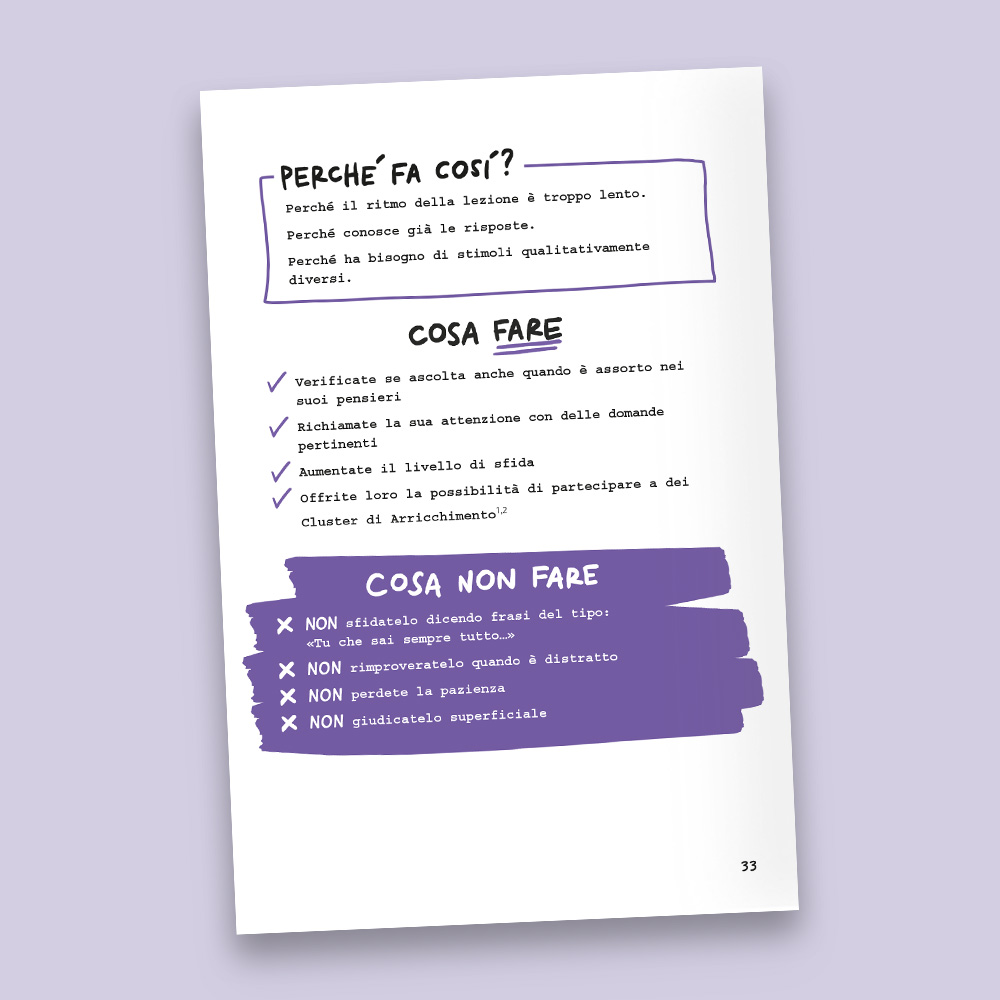
• Explanations of the problem behaviour being considered: Why does he/she do this?
• Brief and simple indications that can be useful to the teacher as a reference point for quickly deciding What to do and reflect on What to avoid.
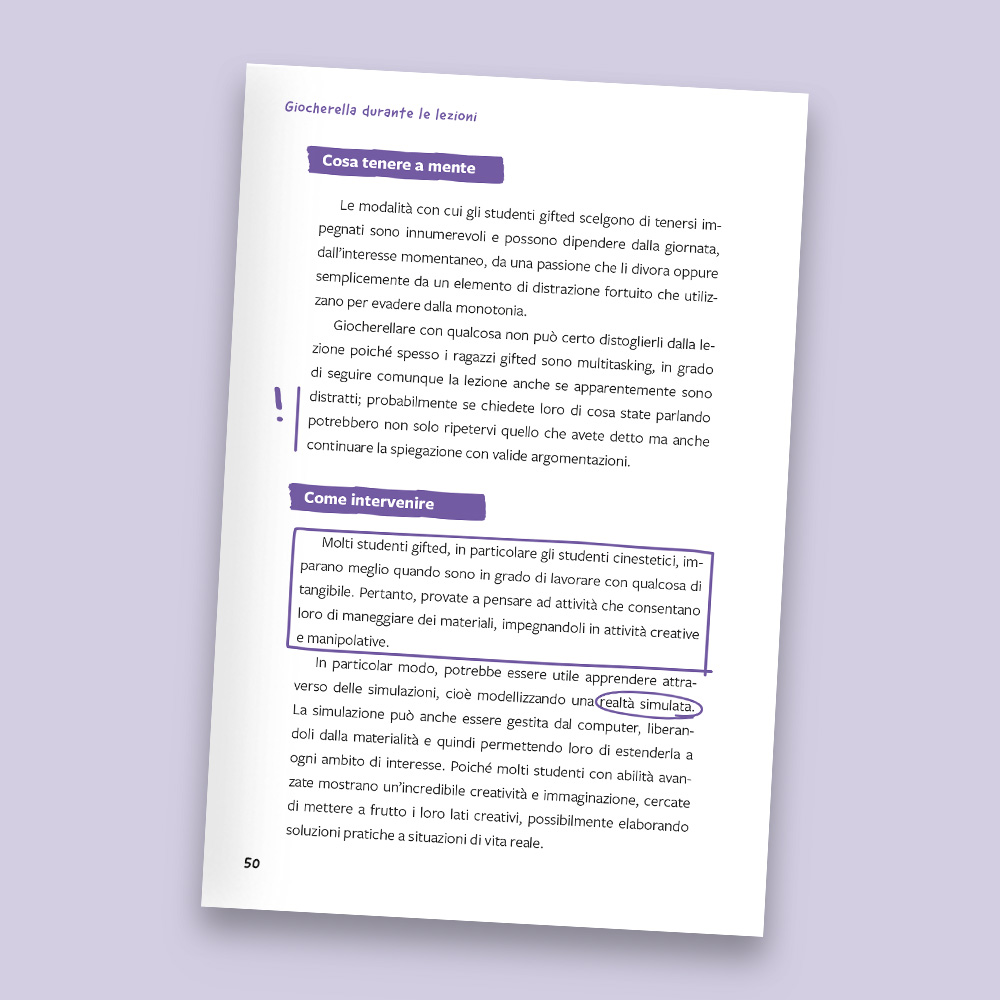
• A more in-depth description of the specific problem behaviourbeing worked on: Analysis of the problem behaviour.
• The tools and educational strategies to create the intervention: How to intervene.
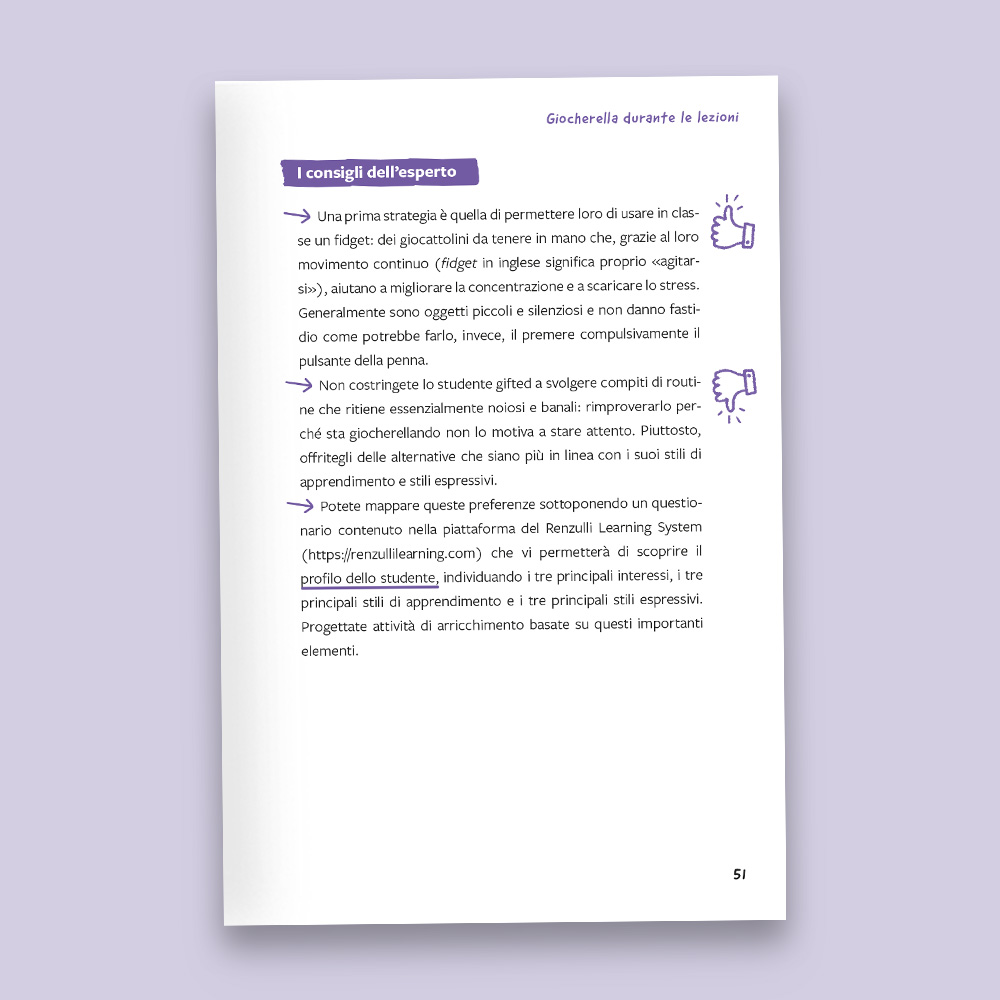
Each chapter closes with The expert advice: reflections to further understand and enrich the teacher’s “briefcase of educational tools”.
Leaf through some pages that have been translated into English to facilitate your evaluation:
THE AUTHOR
Lara Milan Specialist in Gifted and Talented Education, her work is mainly dedicated to training teachers on teaching models and strategies to respond to the special educational needs of gifted, gifted underachievers and exceptional students. Furthermore, she supports teachers in the implementation of educational approaches in the classroom, as well as in the preparation of PDPs for gifted pupils and exceptional students. She is also the founder of SEM Italy, a center accredited by the main international institutions of Gifted and Talented Education: www.semitaly.com